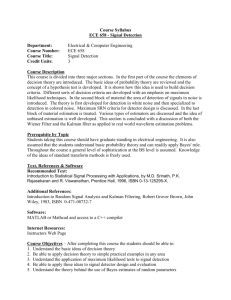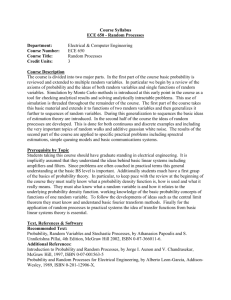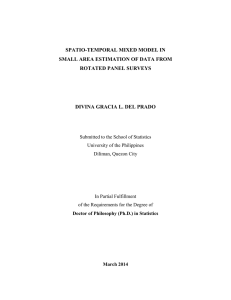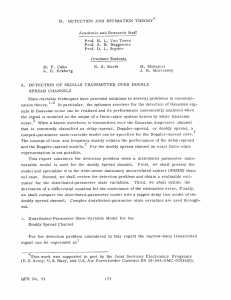XIV. DETECTION AND ESTIMATION THEORYn
advertisement
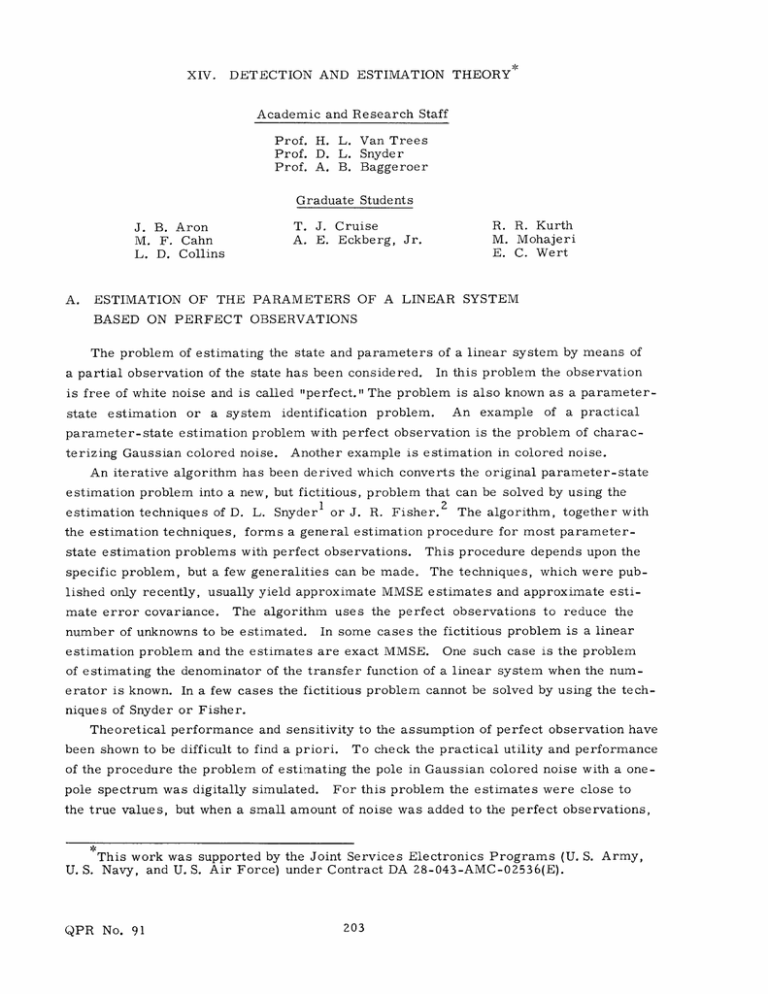
XIV. DETECTION AND ESTIMATION THEORYn Academic and Research Staff Prof. H. L. Van Trees Prof. D. L. Snyder Prof. A. B. Baggeroer Graduate Students A. R. R. Kurth M. Mohajeri E. C. Wert T. J. Cruise A. E. Eckberg, Jr. J. B. Aron M. F. Cahn L. D. Collins ESTIMATION OF THE PARAMETERS OF A LINEAR SYSTEM BASED ON PERFECT OBSERVATIONS The problem of estimating the state and parameters of a linear system by means of In this problem the observation a partial observation of the state has been considered. is free of white noise and is called "perfect." The problem is also known as a parameterstate estimation or a An example identification problem. system of a practical parameter-state estimation problem with perfect observation is the problem of characterizing Gaussian colored noise. Another example is estimation in colored noise. An iterative algorithm has been derived which converts the original parameter-state estimation problem into a new, but fictitious, problem that can be solved by using the estimation techniques of D. L. the estimation techniques, Snyderl or J. R. Fisher. 2 The algorithm, together with forms a general estimation procedure for most parameter- state estimation problems with perfect observations. This procedure depends upon the specific problem, but a few generalities can be made. The techniques, which were pub- lished only recently, usually yield approximate MMSE estimates and approximate estimate error covariance. The algorithm uses the perfect observations to reduce the number of unknowns to be estimated. In some cases the fictitious problem is a linear estimation problem and the estimates are exact MMSE. One such case is the problem of estimating the denominator of the transfer function of a linear system when the numerator is known. In a few cases the fictitious problem cannot be solved by using the techniques of Snyder or Fisher. Theoretical performance and sensitivity to the assumption of perfect observation have been shown to be difficult to find a priori. To check the practical utility and performance of the procedure the problem of estimating the pole in Gaussian colored noise with a onepole spectrum was digitally simulated. For this problem the estimates were close to the true values, but when a small amount of noise was added to the perfect observations, This work was supported by the Joint Services Electronics Programs (U. S. Army, U. S. Navy, and U. S. Air Force) under Contract DA 28-043-AMC-02536(E). QPR No. 91 203 (XIV. DETECTION AND ESTIMATION THEORY) they became extremely inaccurate. Further details may be found in the author's Master's thesis. J. B. Aron References 1. D. L. Snyder, "A State Variable Approach to Continuous Estimation," Sc. D. Thesis, M.I.T., November 1966, p. 1-36. 2. J. R. Fisher, "Optimal Nonlinear Filtering," Thesis, University of California at Los Angeles; Report No. 66-5, January 1966. QPR No. 91 204





